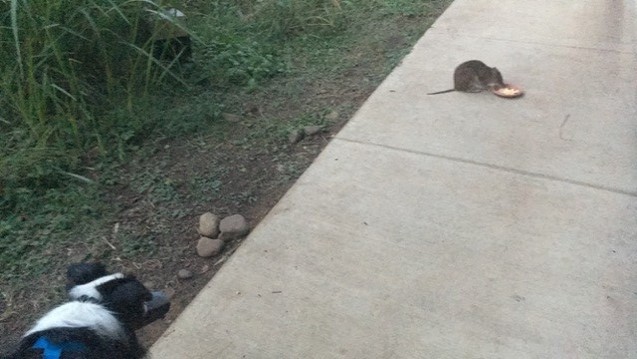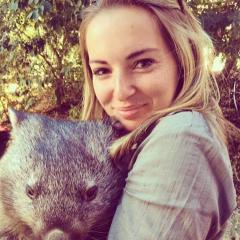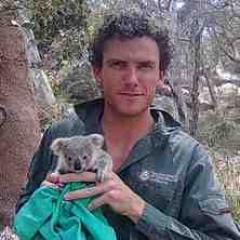Background
Native wildlife in Australia have faced devastating effects from introduced predators, as our fauna has not evolved concurrently with eutherian predators (Salo et al. 2007). Following the introduction of cats, foxes and other exotic predators, Australia now has the world’s worst mammal extinction record (Johnson 2006). This high extinction rate and reduction in wild populations has been the motivation behind many wildlife reintroduction programs. However, ongoing predation by these introduced predators remains the downfall of most of these programs (Armstrong et al. 2015).
One method of combatting these high extinction rates and failed reintroduction programs includes training native animals to avoid introduced predators. This is particularly relevant for Australian wildlife, where native species appear to be naïve to introduced predators and fail to recognise the predator as a threat, or exhibit an ineffective response (Cox & Lima 2006). There are various methods of predator avoidance training, including olfactory and visual cues, usually paired with something unpleasant to encourage the native animals away from the perceived threat (Moseby et al. 2015). Predator avoidance training can be combined with technology to increase success of release e.g. microchip-automated devices could provide released (microchipped) animals with areas of refuge inaccessible by predators.
Aims
- Examine the relationship between Australian mammals and predators
- Determine whether Australian mammals have an innate fear of introduced predators
- Investigate the effectiveness of predator avoidance training for bandicoots
- Trial microchip-automated technology as a method for providing safe refuge to wildlife
Methodology
Wild-caught northern brown bandicoots, Isoodon macrourus, are brought into the Hidden Vale Wildlife Centre, where they undergo testing to determine recognition of predators using both scent and visual cues (faeces, taxidermied model, and a live-predator). Time budgets are used to compare the study animals’ behaviours during a baseline period, and then during exposure to predators (e.g. cat, fox, dog) and controls (e.g. wallaby).
Time budgets are used to compare study animals’ behaviour before, during and after exposure to predator stimulus. Released animals’ can be tracked to observe whether the training has an effect on reintroduction success to the wild, and which training is more effective.

During predator avoidance training, bandicoots are again exposed to the predator, and an alarm call is played in addition to an unpleasant stimulus (such as a foam pellet from a toy pellet gun), to encourage the bandicoot away from the predator. Testing is then done to determine if the bandicoots react differently after predator avoidance, compared with the initial recognition data
Bandicoots are also trained to use a microchip-automated door to access a nestbox (safe refuge). Only the intended, microchipped animal can gain access, reducing predation and competition. Animals are trained in stages, to ensure habituation to the doors. A brush-tailed phascogale was initially trained as proof of concept that a wild animal could be trained to use these doors (DOI 10.1071/AM18017).
After training, bandicoots are released back to the wild and tracked using VHF transmitters to determine their movements. Trapping then occurs periodically to determine their survival, and if there is a difference between predator trained and control bandicoots. The microchip-automated nestboxes are also placed at the release site, and their use is recorded to determine use by the bandicoots in the wild.
Expected outcomes
This research will improve outcomes of wildlife reintroduction or translocation programs, by providing innovative solutions for predator control. The use of microchip-automated devices has shown great potential, particularly for hollow dependent species such as phascogales and possums, and predator avoidance could aid in survival after release.
References
Armstrong, DP, Moro, D, Hayward, MW & Seddon, PJ 2015, ‘Introduction: the development of reintroduction biology in New Zealand and Australia’, in DP Armstrong, MW Hayward, D Moro and PJ Seddon (eds), Advances in Reintroduction Biology of Australia and New Zealand Fauna, CSIRO Publishing, Clayton South, Australia, pp. 1-6.
Cox, JG & Lima, SL 2006, ‘Naivete and an aquatic-terrestrial dichotomy in the effects of introduced predators’, Trends in Ecology and Evolution, vol. 21, no. 12, pp. 674-680.
Edwards, MC, Hoy, JM, FitzGibbon, S, Murray, PJ 2018, ‘Training a wild-born marsupial to use microchip-automated devices: the brush-tailed phascogale as proof of concept’, Australian Mammalogy, DOI 10.1071/AM18017.
Johnson, C 2006, Australia’s Mammal Extinctions: A 50,000 year history, Cambridge University Press, New York.
Moseby, K, Carthey, A & Schroeder, T 2015, ‘The influence of predators and prey naivety on reintroduction success: current and future directions’, in DP Armstrong, MW Hayward, D Moro and PJ Seddon (eds), Advances in Reintroduction Biology of Australia and New Zealand Fauna, CSIRO Publishing, Clayton South, Australia, pp. 29-42.
Salo, P, Korpimäki, E, Banks, PB, Nordström, M & Dickman, CR 2007, 'Alien predators are more dangerous than native predators to prey populations', Proceedings of the Royal Society B: Biological Sciences, vol. 274, no. 1615, pp. 1237-43.
Acknowledgements
Australian Government Research Training Scholarship
Hidden Vale Wildlife Centre Conservation Top Up Scholarship
Hidden Vale Wildlife Project Research Support Funding
Conservation and Wildlife Research Trust
Bunnings West Ipswich
Sporting Shooters Association of Australia
All property owners, pet owners, and volunteers involved in the project





